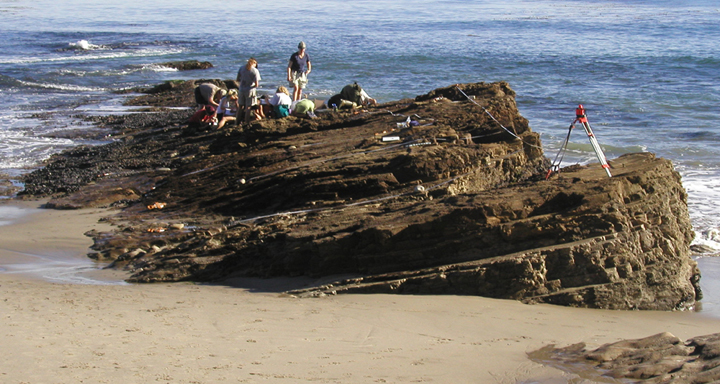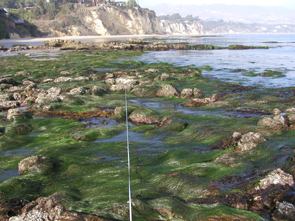Paradise Cove | MARINe
Click here for Long-Term trends
Click here for Biodiversity Survey findings
Paradise Cove is located in the South Coast region of California. The site is located in an Area of Special Biological Significance (Mugu Lagoon to Latigo Point ASBS), within the Point Dume State Marine Conservation Area. There is at least one storm water discharge in the vicinity of this site, and this site is 1.2 miles northeast of the Point Dume Mussel Watch site. This moderately sloping site consists of moderately uneven terrain, containing few cracks and folds.

Paradise Cove is dominated by a mixture of consolidated sandstone bedrock and sandy beach, and the area surrounding the site is comprised of a mixture of consolidated bedrock and sandy beach. The primary coastal orientation of this site is southeast.
Long-Term Monitoring Surveys at Paradise Cove were established in 1994, primarily funded by the Bureau of Ocean Energy Management. The site was sampled by University of California Los Angeles through 2018, and is now monitored by California State University Fullerton and California State Polytechnic University, Pomona. Long-Term MARINe surveys currently target the following species: Chthamalus/Balanus (Acorn Barnacles), Mytilus (California Mussel), Endocladia (Turfweed), Phyllospadix (Surfgrass), and Pisaster (Ochre Star). In addition, motile invertebrates, barnacle recruitment, mussel size structure, and water temperature are monitored at this site. Click here to view Long-Term trends at this site.

Biodiversity Surveys were done in 2001, 2006, 2010, 2013, 2018, 2021, and 2025. The Biodiversity Survey grid encompasses two sections that are approximately 12 meters (along shore) x 10 meters (seaward), and 15 meters (along shore) x 10 meters (seaward). Click here to view Biodiversity Survey findings at this site.
For more information about Paradise Cove, please contact Jennifer Burnaford (jburnaford@Fullerton.edu) and Jayson Smith (jaysonsmith@cpp.edu).


